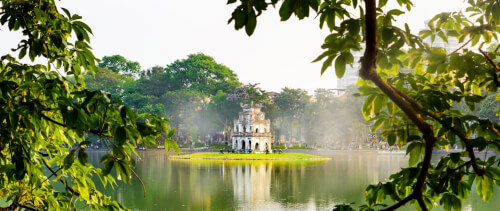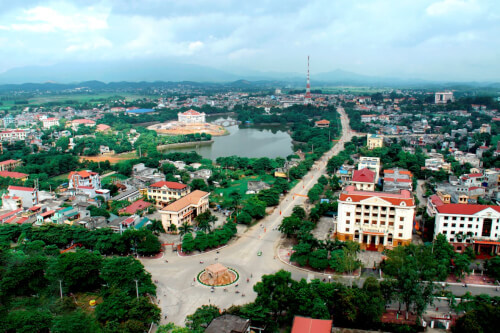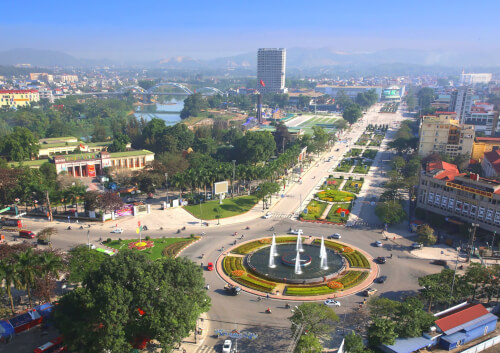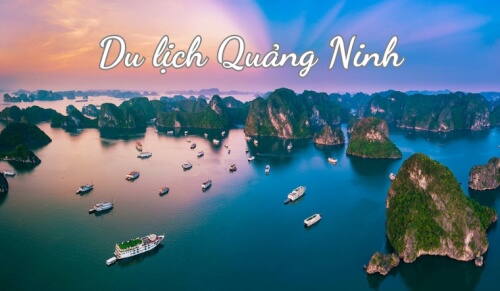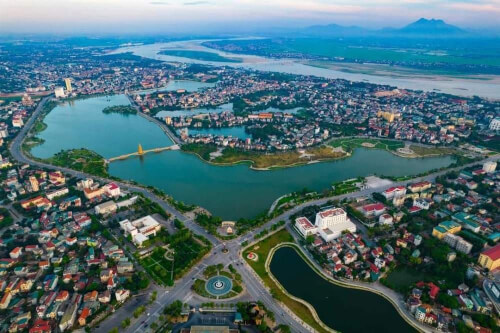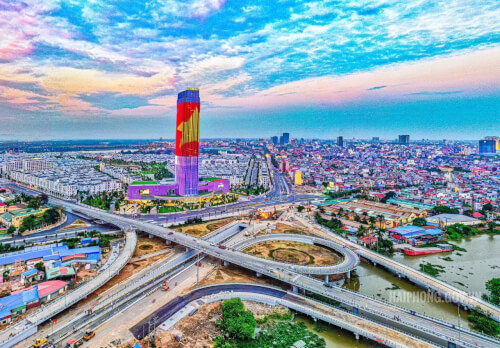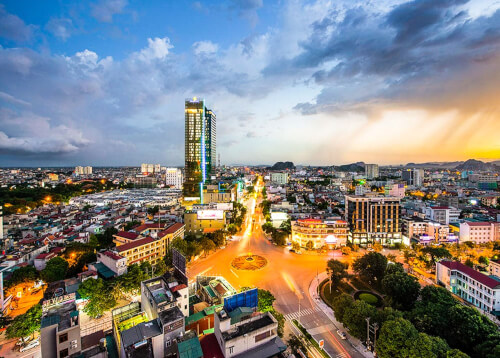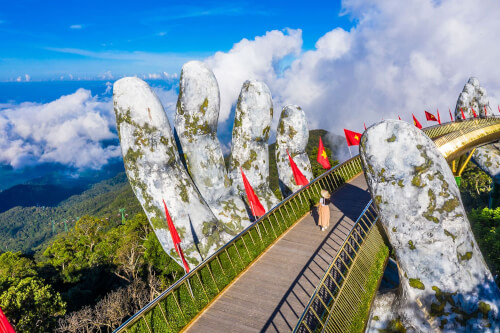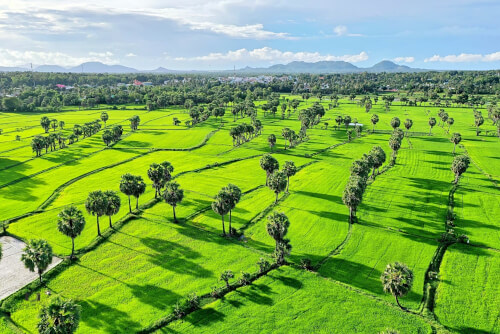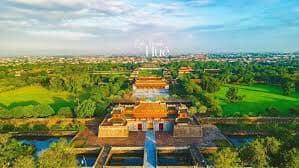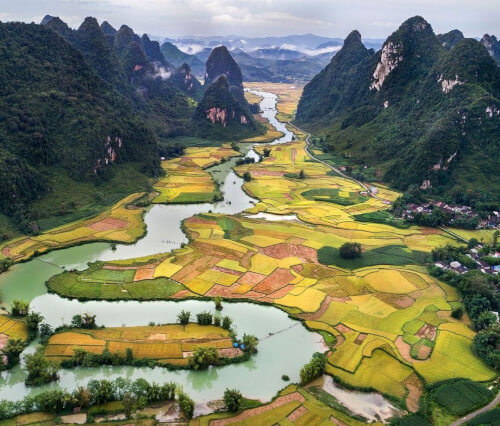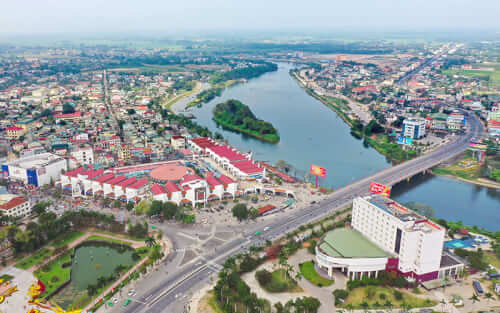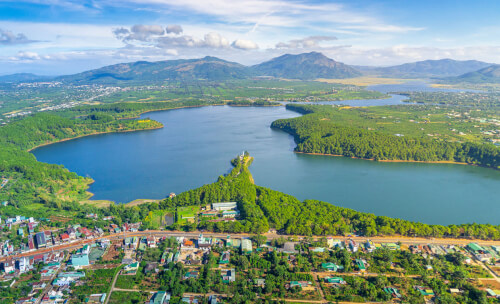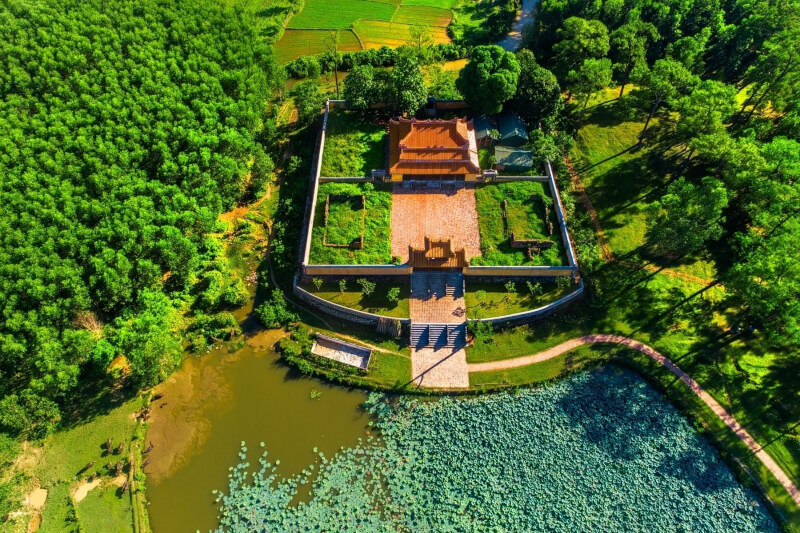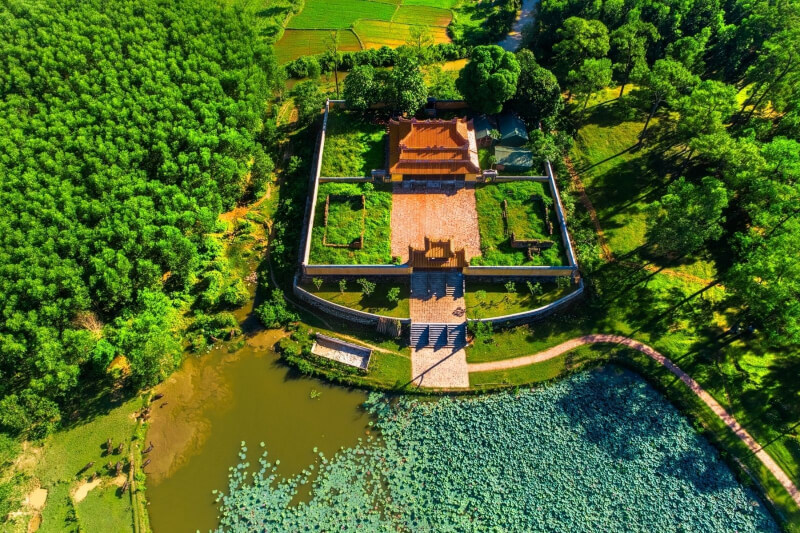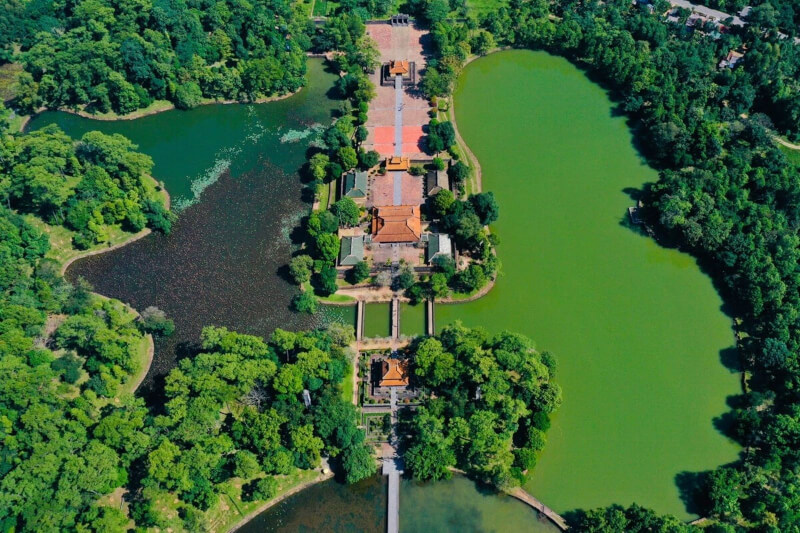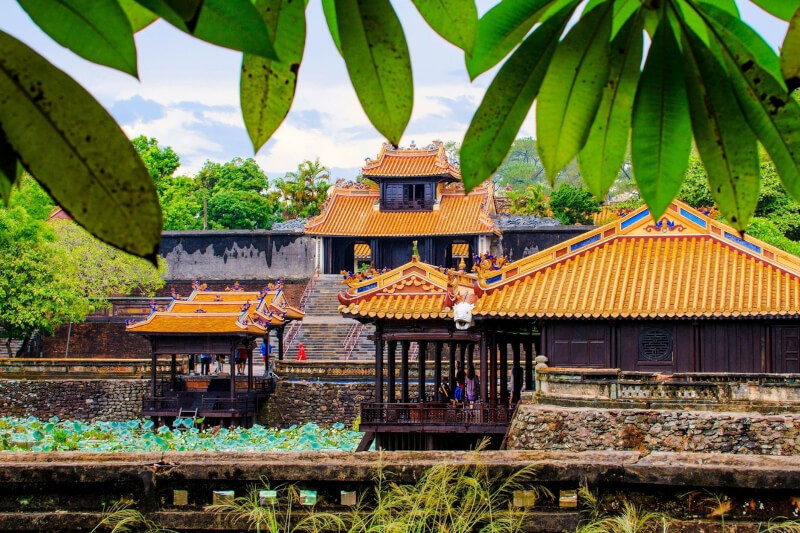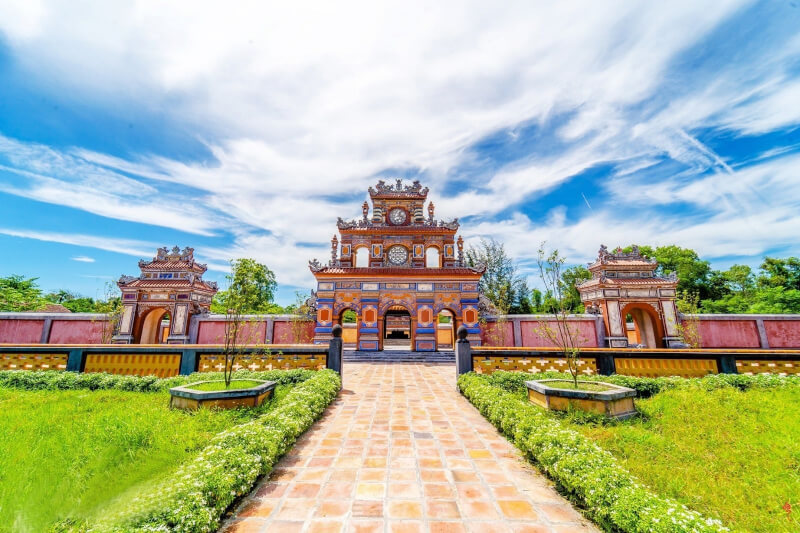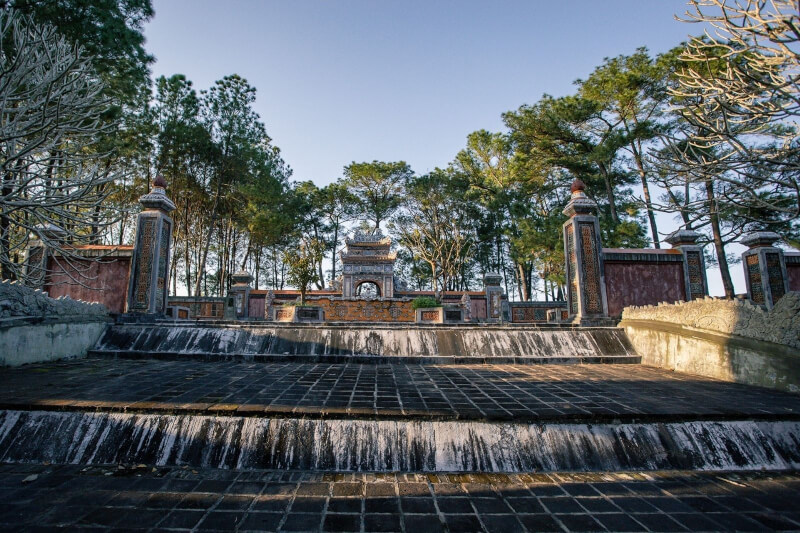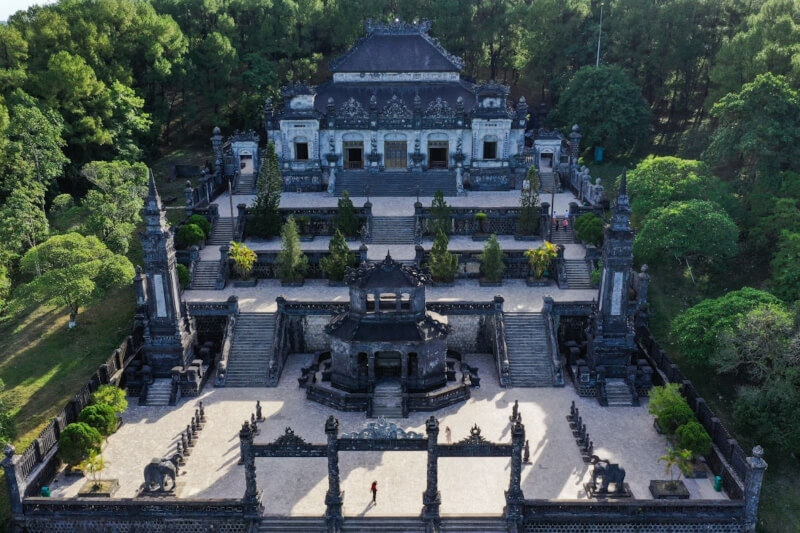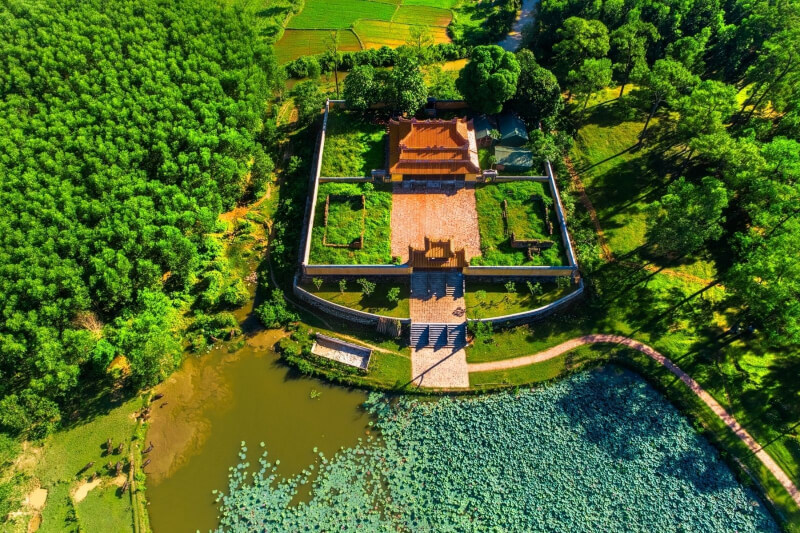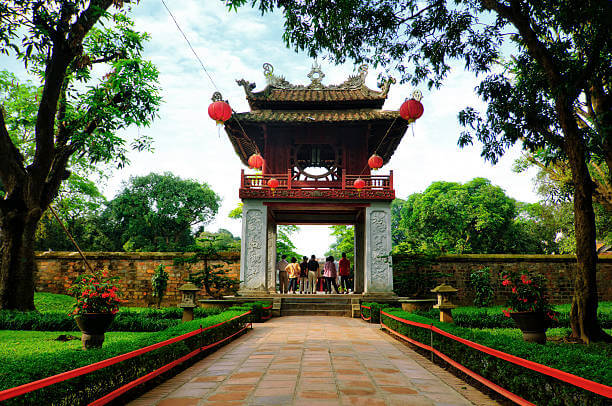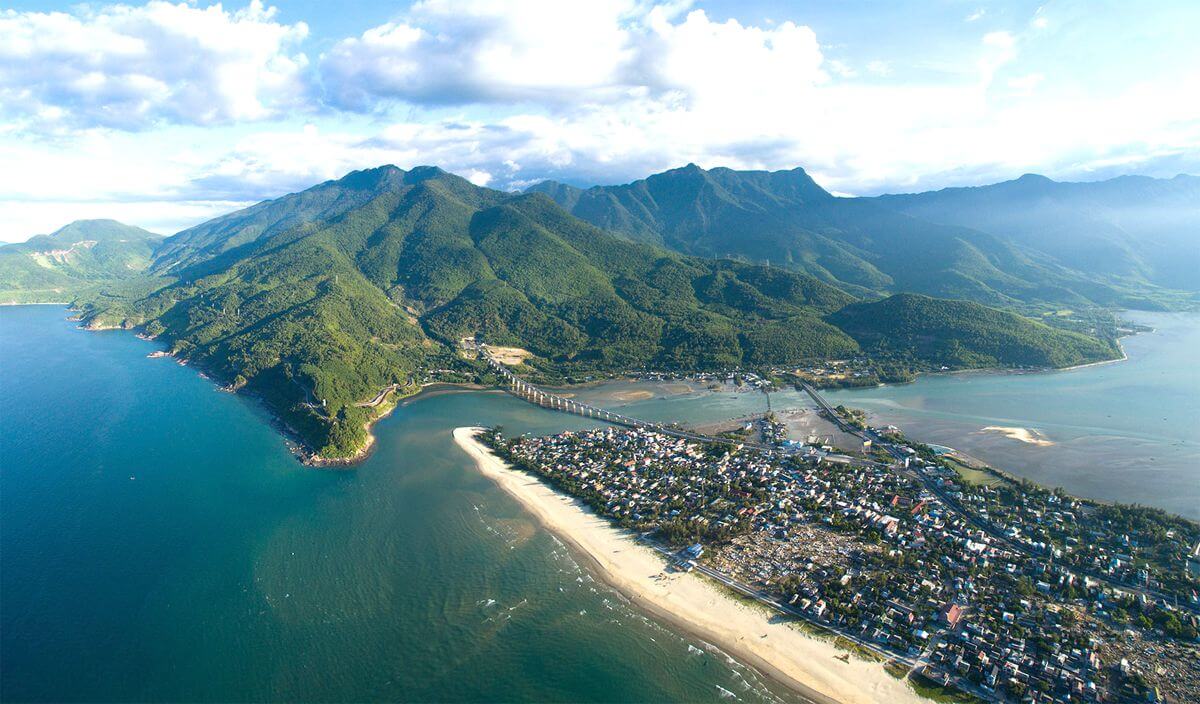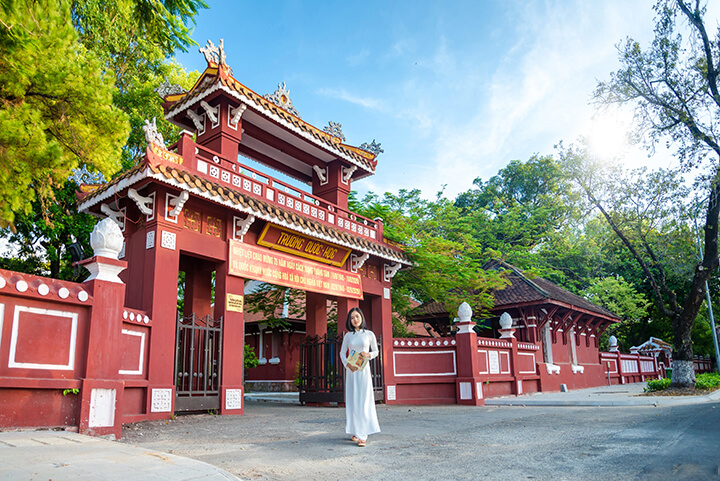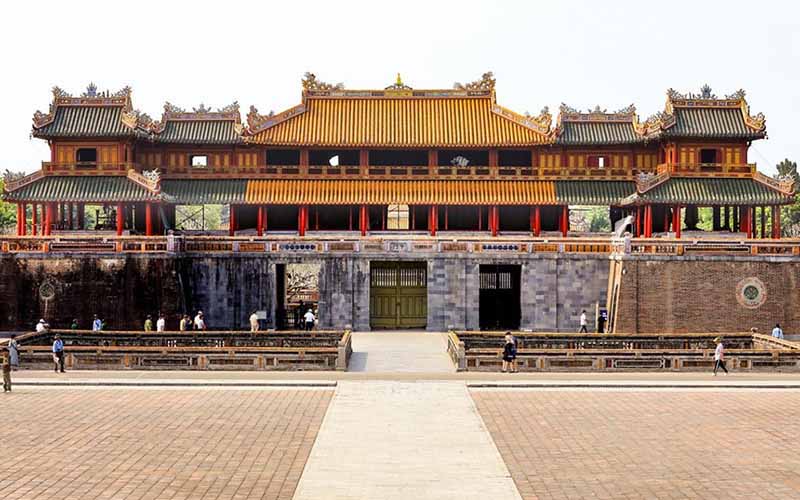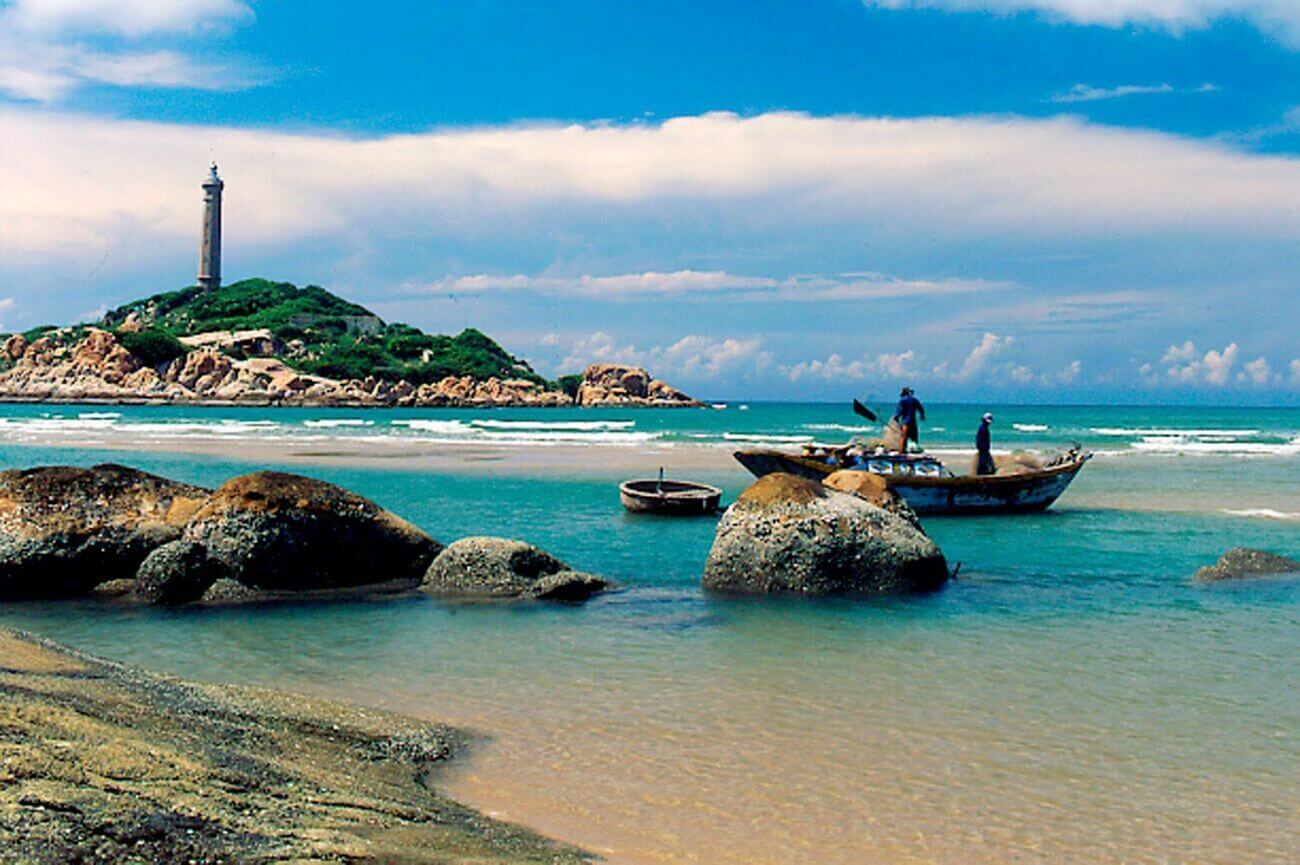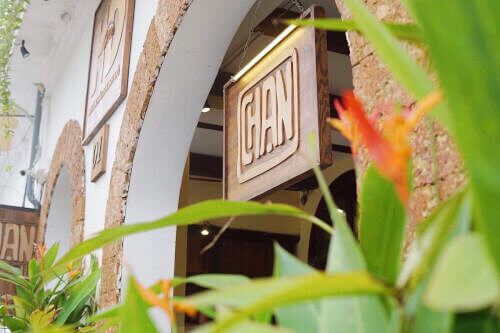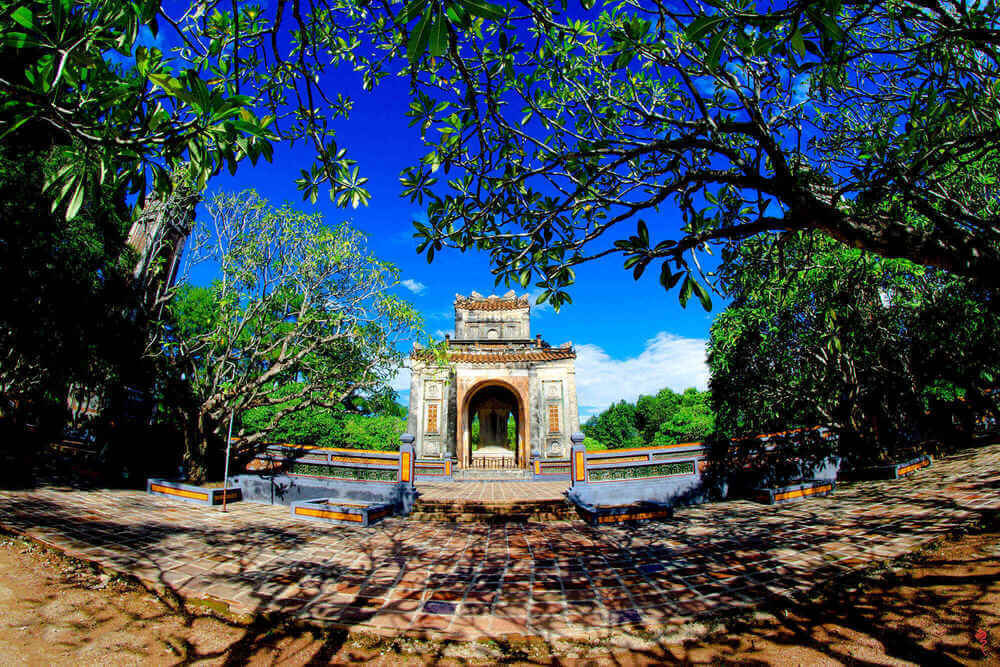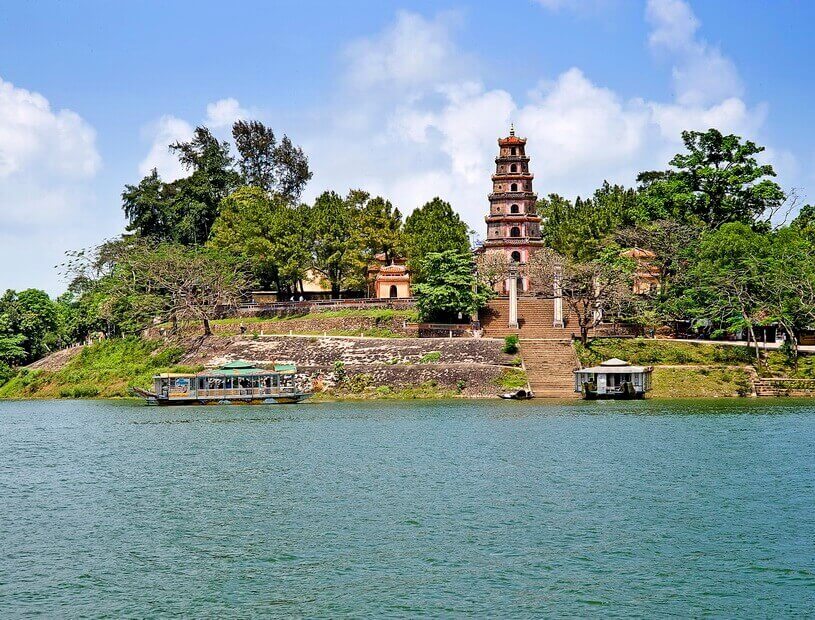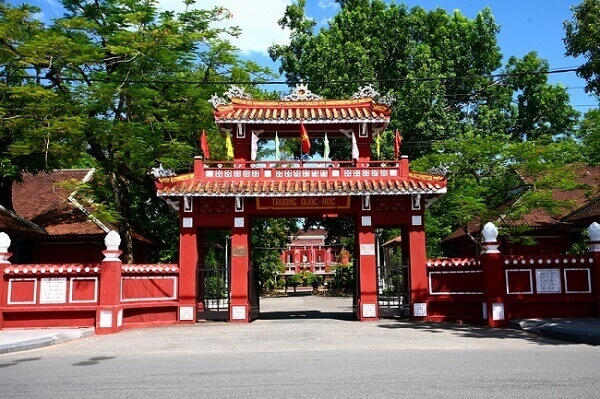Hue Mausoleum is a place that attracts many researchers and tourists to learn. According to many experts' opinions, Hue mausoleums are more beautiful than the mausoleums of the Ming Dynasty kings in China. Let's immediately explore 7 Hue mausoleums when arriving in the ancient capital! The Nguyen Dynasty existed from 1802 - 1945, with up to 13 kings. But for different historical reasons, only 7 kings' tombs still exist. These are the mausoleums of Gia Long, Minh Mang, Thieu Tri, Tu Duc, Duc Duc, Dong Khanh and Khai Dinh. All mausoleums were built and planned according to Eastern feng shui philosophy. In particular, the "Mysterious Palace" must be located in the right dragon vein. The 7 Hue mausoleums are located in a quite separate area in the west of the capital. The reason it was placed in the West is because according to ancient beliefs, when the king died, he and the sun went to the west to rest in peace. In that quiet corner of the sky, the peaceful and poetic Perfume River flows through. It can be said that the mausoleums of the Nguyen Dynasty kings have reached the pinnacle of landscape architectural art. Each mausoleum with its own characteristics is a beautiful achievement of architecture. Each work carries within itself a concept of life and death, a profound philosophy about life. 1. Gia Long Tomb - Thien Tho Lang: Gia Long Tomb was built in a traditional architectural style. The whole is divided into 3 main areas: Tomb area, Pagoda and Minh Thanh Palace. A special point is that Thien Tho peak was built and calculated by the ancients to be located in the middle next to the two tombs of King Gia Long and Queen Thua Thien Cao. Known as the mausoleum with the most unique feng shui architecture in Vietnam. To visit Gia Long mausoleum, you can go by road or row a boat on the Perfume River. It can be seen that Gia Long Tomb is a masterpiece of landscape and architecture. Hidden in the middle of a vast natural space, evoking a majestic and serene impression. 2. The solemn Minh Mang Tomb: located in the Cam Ke mountain area, An Bang hamlet, Huong Tra district. The mausoleum is located about 12km from Hue city, near Bang Lang intersection. This place is the confluence of Ta Trach and Huu Trach sources to form the Huong River. Minh Mang Tomb is a large-scale architectural complex, including about 40 large and small architectural works. The entire mausoleum resembles a human body lying with its head resting on a high hill, its limbs stretching out toward the river junction. Minh Mang Tomb has majestic and majestic symmetrical architecture. Including Dai Hong Mon (mausoleum gate), Bi Dinh (yard), soaking area, Minh Lau floor, Buu Thanh (part around the tomb). In particular, there are nearly 60 crosswords carved with poems, considered a museum of selected poems of Vietnamese poetry in the early 19th century. Standing anywhere in the mausoleum, we can see architectural works, mountains and grass silhouetted against the pond and lake water surface like a watercolor painting. 3. Tomb of Thieu Tri - Xuong Lang: (also known as Xuong Lang) was built in a very short time. Only for 10 months in 1948. The mausoleum faces northwest, the most unique direction among Hue mausoleums. The mausoleum was summarized and selected from the architecture of Gia Long tomb and Minh Mang tomb. The structure of Thieu Tri mausoleum includes two main areas: mausoleum and mausoleum. Surrounding the mausoleum is a peaceful scene of countryside, green trees and green fields. 4. Tu Duc Tomb - Khiem Lang: Panorama of Tu Duc Tomb looks like a large park with an area of 12 hectares. All around are green trees and a poetic space. The mausoleum consists of 50 large and small structures distributed over complex terrain. The entire mausoleum is distributed on two parallel axes, taking Giang Khiem mountain as a criminal record. Take Duong Xuan mountain as the standard. Ho Luu Khiem is the element of enlightenment. Coming here, you will feel an ancient, quiet and lyrical Tu Duc mausoleum. In particular, the mausoleum also preserves the Minh Khiem theater - one of the oldest theaters in Vietnam. 5. Duc Duc Tomb (An Lang) - resting place of 3 Nguyen Dynasty kings: Compared to other Hue tombs of Nguyen Dynasty kings, Duc Duc Tomb has simple and modest architecture. King Duc Duc, 3 days after ascending the throne, was deposed and starved to death in prison. A few years later, when King Duc Duc's son ascended the throne and took the reign name Thanh Thai, he began building a mausoleum for his father and named it An Lang. Later, King Duy Tan and King Thanh Thai who died were also buried here. 6. Dong Khanh Tomb - Tu Lang: A part of architecture influenced by Western European culture with a system of multicolored glass windows and 2 paintings depicting the French - Napoleonic war. The mausoleum area has almost European style from architecture, decoration to construction materials. In particular, the stele house is a typical example of Romance architecture mixed with Asian architecture. It can be said that Dong Khanh mausoleum is the most unique Hue mausoleum, with a mixture of European, Asian and neo-classical architecture. 7. Khai Dinh Tomb - Ung Lang: Compared to the other 6 Hue tombs of the Nguyen kings, Khai Dinh mausoleum is the last tomb. Looking back from afar, the mausoleum looks like a castle in Europe. The mausoleum has the smallest architectural plan located on the slopes of Chau Chu mountain. This is the project that requires the most time, effort and money. King Khai Dinh only reigned for less than 10 years, but the time to build his tomb lasted 11 years (1920-1931). The architecture of Khai Dinh mausoleum is a combination of East, West and Ancient Metal architecture. A special feature is that King Khai Dinh's mausoleum has unique ceramic mosaics. In Khai Dinh mausoleum, there are currently two bronze statues depicting the king at a 1/1 scale. A statue sitting on a gilded throne was carved in Paris. And a standing statue was cast in Hue. Each Hue mausoleum reflects the life and personality of the resting king. Perhaps that is why Hue mausoleums have a very unique and strange beauty. If you have the opportunity to set foot in the ancient capital, don't forget to visit these 7 Hue mausoleums!
Hue 20 view From January to April.
Ngày cập nhật : 25/11/2025

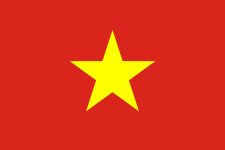 vn
vn en
en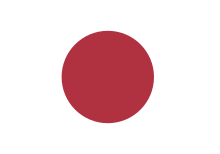 ja
ja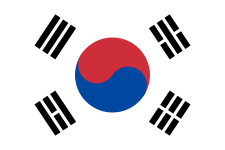 ko
ko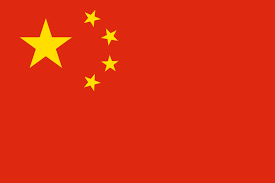 zh
zh